Review: NEXT@90 CURTAIN CALL at San Francisco Ballet
A trio of favorites from last year's festival of world premieres runs through April 13th at the War Memorial Opera House
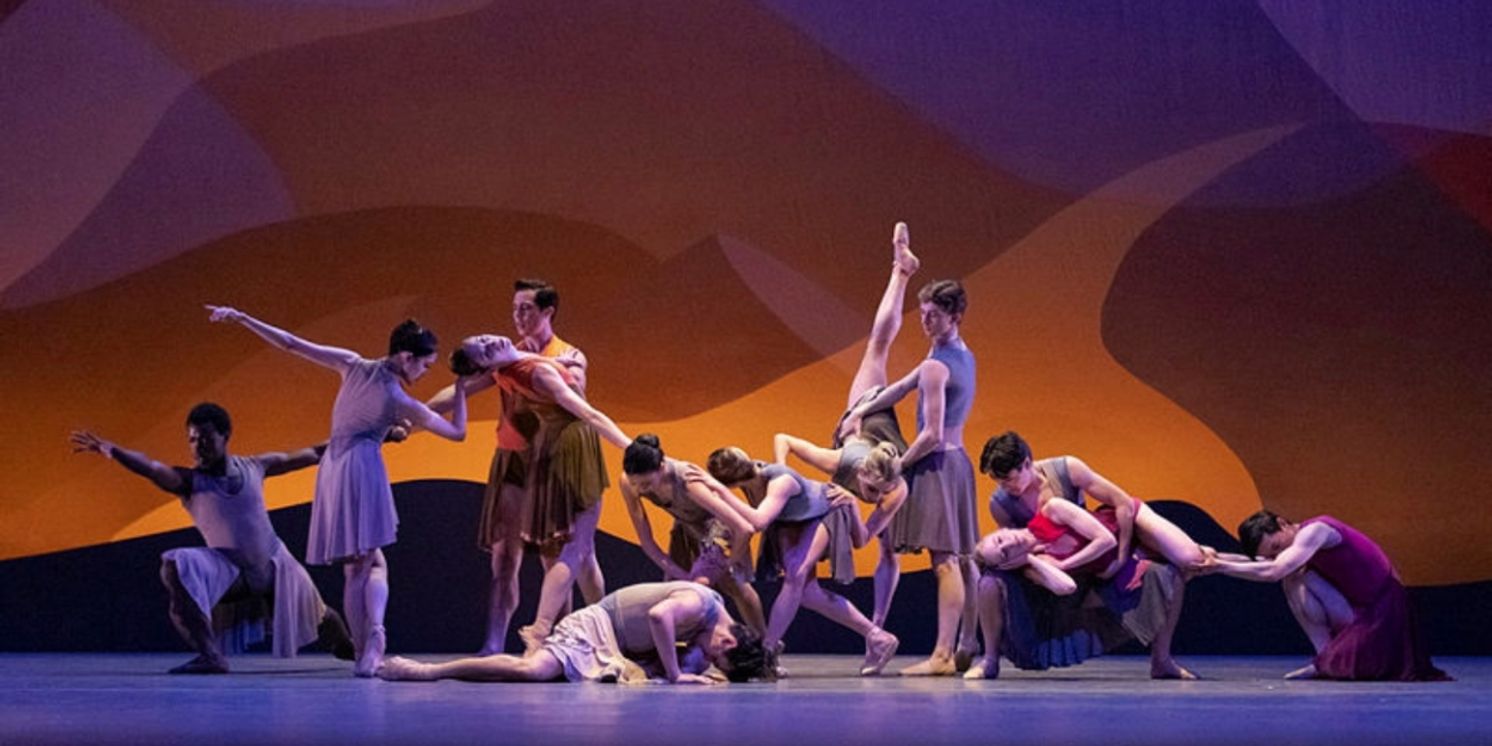
To celebrate its 90th season in 2023, San Francisco Ballet created a wildly ambitious festival of nine world premieres by a diverse group of celebrated choreographers. As exciting as such events are, though, it can be hard to discern in a single viewing the actual, lasting merits of that many new works. Thus, I am grateful that SFB is giving us a chance to revisit a trio of the better-received ballets from that festival via its new next@90 Curtain Call program. If none of the three is necessarily destined to become an enduring classic, each has its compelling aspects and as a group they provide a nicely varied evening of dance. The only thing they really have in common is they are all mid-size works for a baker’s dozen or so of dancers and each begins without music in the standard sense.
The program kicks off with Nicolas Blanc’s mesmerizing Gateway to the Sun, which I found to be the most rewarding ballet on the program even if its overall impact feels just a tad muted. Blanc’s choreography is full of the unshowy, fluid kind of movement that Blanc himself excelled at so beautifully when he was a dancer with SFB a number of years ago. He’s based his ballet on a poem by the 13th-century Persian mystic Rumi, but not in a literal way other than that the central figure is called “A poet.”

with Isaac Hernández as "A poet" right foreground
As the curtain rises to the sound of rustling wind, the poet is dancing a twisty, gestural solo in front of a group of 12 dancers listing slowly from side to side, silhouetted against a backdrop by scenic designer Katrin Schnabl that evokes a sand painting or a desert landscape. The poet begins to interact with the dancers one after another, activating them into movement that seems to embody his thoughts and feelings. Or maybe not. I think the best way to enjoy this ballet may be to just let all that go and surrender to its ever-shifting moods. Blanc’s choreography complements Anna Clyne’s beguiling score that oscillates between comforting and challenging, sweet and astringent, propulsive and meditative.
The ballet’s most effective section is a sextet for the women that manages to be both exuberant and serene, concluding in a startling moment when they appear to notice something on the distant horizon before twirling off into the wings one by one. It carries echoes of the final movement of Jerome Robbins’ masterpiece Dances at a Gathering, but here the effect is more playful, less melancholic. The ballet ends as it began, with the poet downstage center, but this time the backdrop and dancers behind him are lit with greater intensity by Jim French (hence the title?).
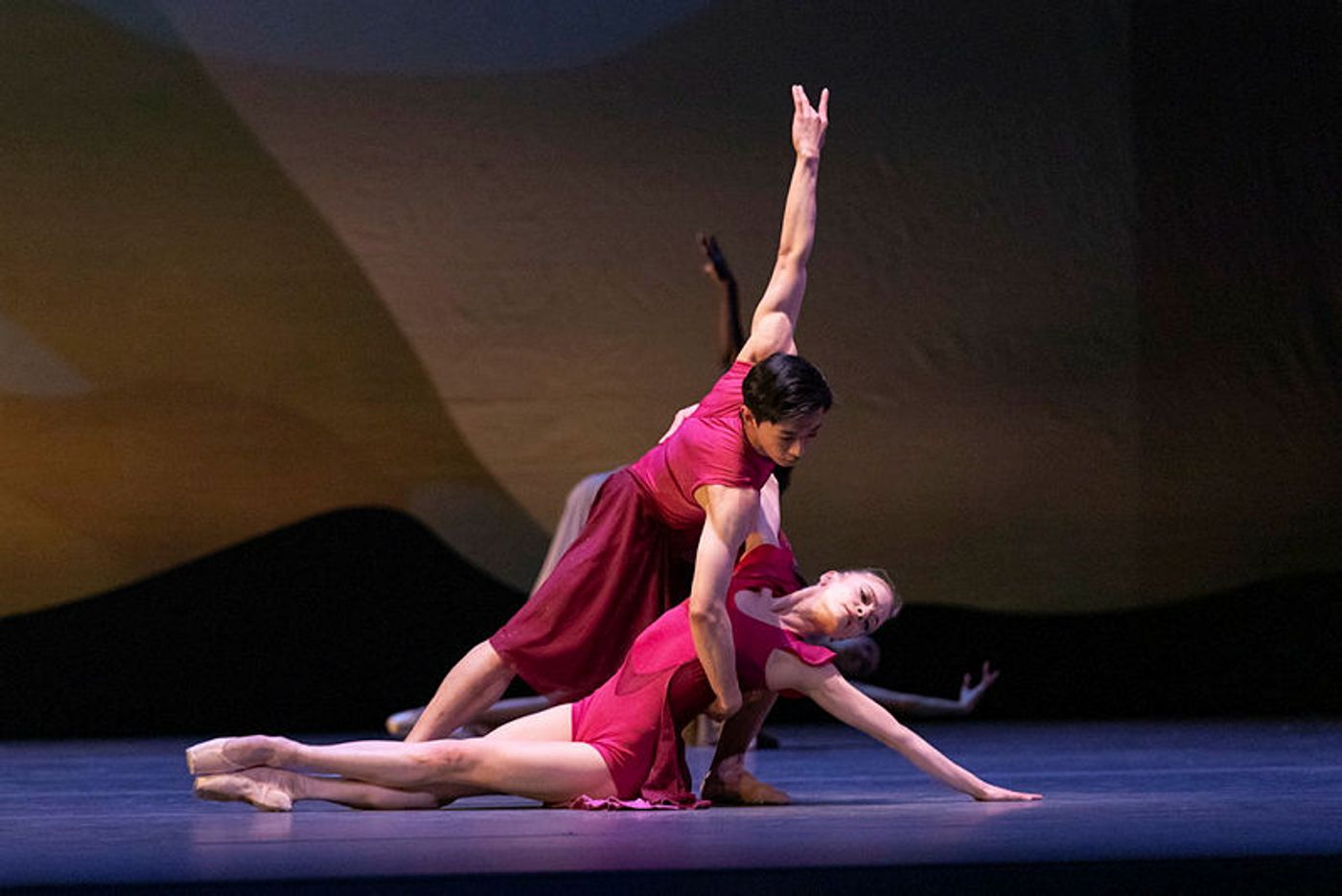
The cast of 13 was phenomenal in the plasticity of their movement. Although there are two featured couples in addition to the poet, Gateway to the Sun is really an ensemble piece and the highest praise I can give is to say that no one stood out. Well, actually, that’s not true. As is their wont, Sasha De Sola and Wei Wang possessed just an extra ounce of otherworldliness that felt totally in line with the mysticism of the ballet’s poetic underpinnings. If the ballet itself left me wanting perhaps a little more, the dancers never did.
Nex up was Yuri Possokhov’s Violin Concerto set to the same score as Balanchine’s magnificent Stravinsky Violin Concerto, and it was easily the most classical ballet on the program. While Possokhov’s choreography isn’t a patch on the master’s, a second viewing revealed a thoroughly entertaining and often alluringly quirky ballet that allows to you hear Stravinsky’s angular music in new ways, and that’s certainly not a bad thing. The steps are sometimes a little artless in the way they trample over Stravinsky’s spiky rhythms, but Possokhov totally nails the rambunctious, folksy spirit of the music and has a field day playing with all of the counterpoint in the score.
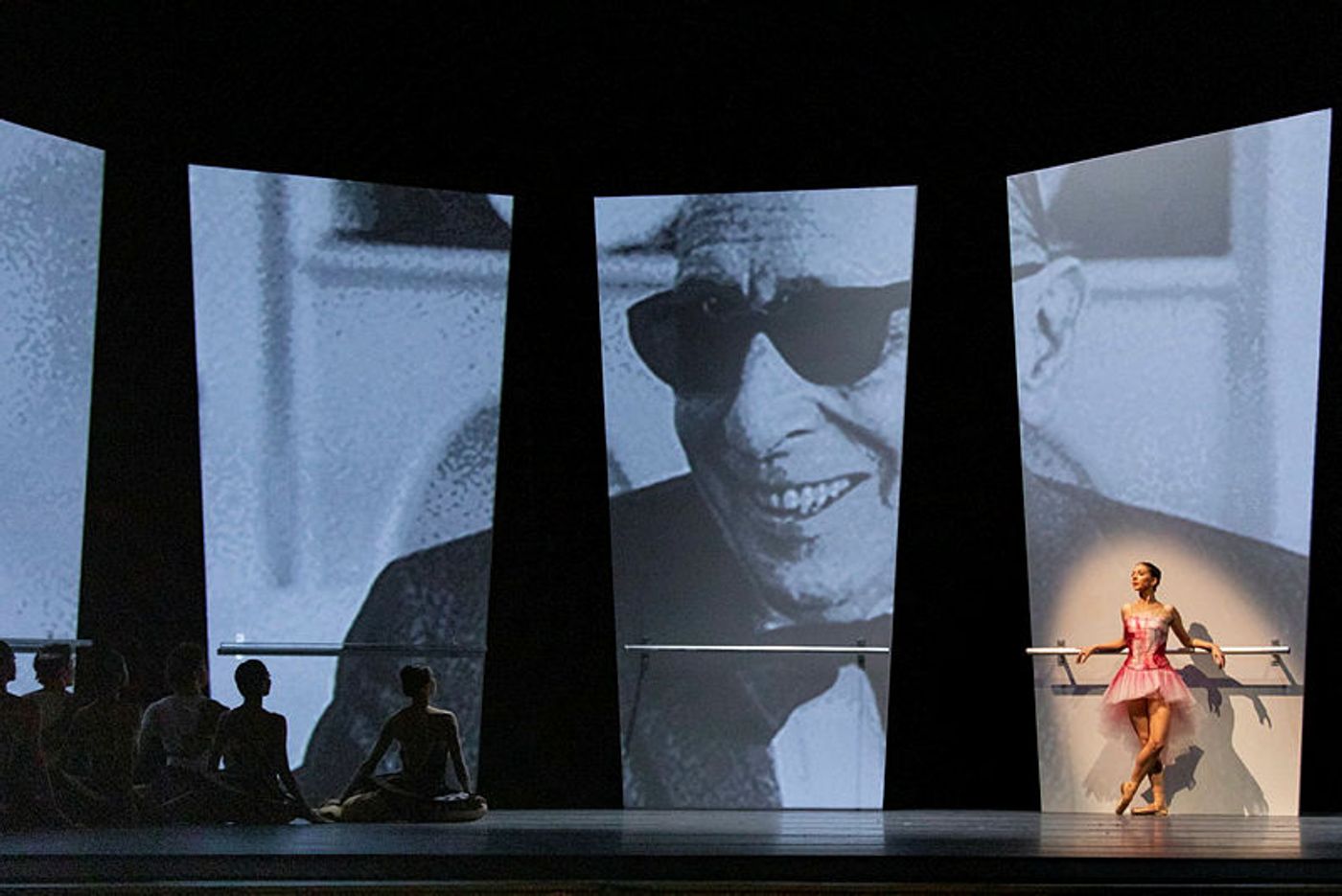
at San Francisco Ballet
The ballet opens in silence, with a Muse going through exercises at the barre of an abstracted ballet studio. When the orchestra begins playing, she is joined by a tag team of dancers bounding onstage to the vivacious music. The following two movements are given over to a mixed pair of spritely couples and then a two-women one-man trio before the entire company joins in a final frolic. It’s fun, it’s frisky, it’s flat-out delightful. And, alas, also a bit over-designed. Sandra Woodall's bodices and pleated tutus for the women and tunics for the men have so much asymmetrical froufrou that they overwhelm the dancers and distract from their gorgeous line. Alexander V. Nichols' projections of Stravinsky on the walls of the studio are a bit clunkily on-the-nose, though the blowups of the musical score feel just right for the post-postmodern aesthetic of the ballet.
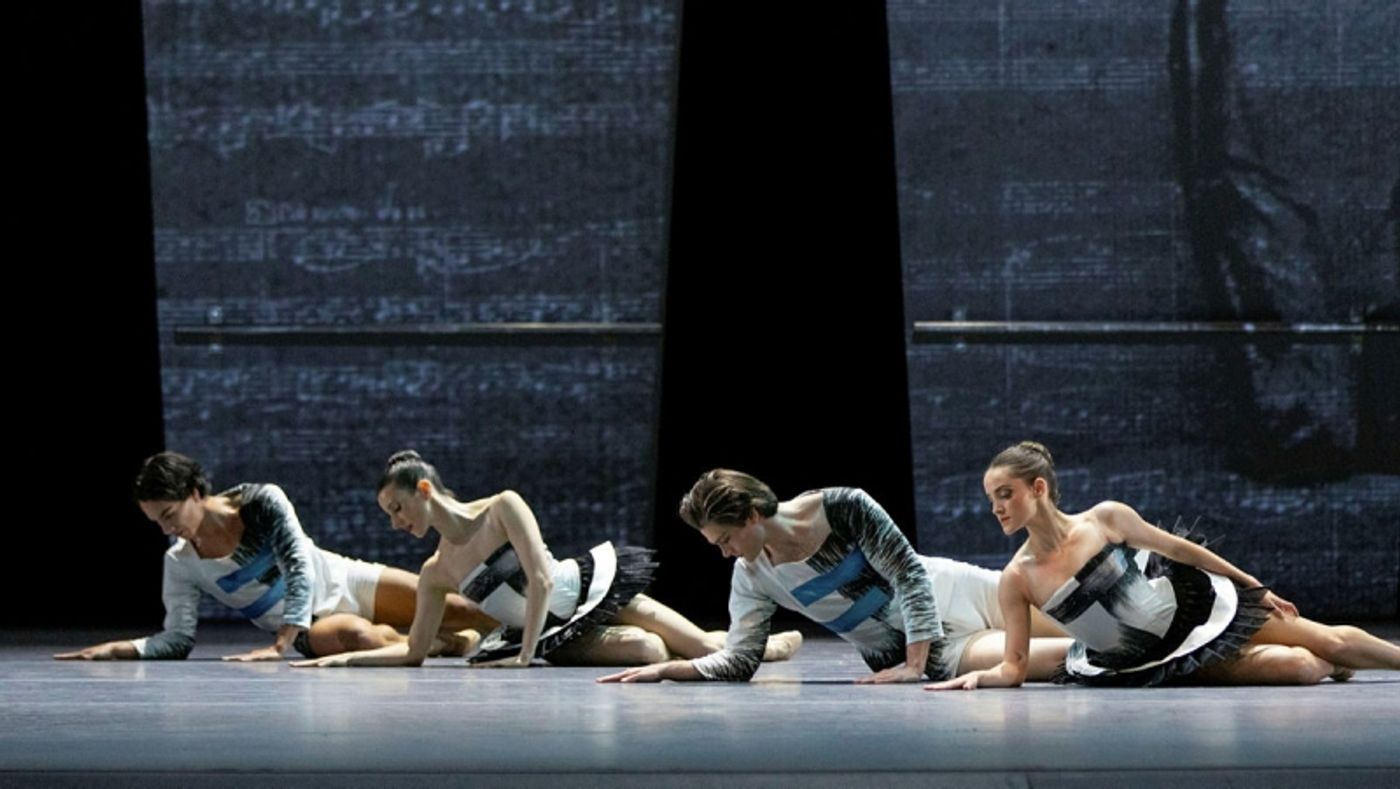
make a smashing foursome in Yuri Possokhov's Violin Concerto at San Francisco Ballet
The opening night cast was definitely up for a romp. Sasha Mukhamedov as the Muse got things off to a terrific start with her luxuriant extra-ness. Joseph Walsh, especially in the trio, played off her and Wona Park marvelously with his boy-next-door insouciance. The two couples comprised of Cavan Conley, Esteban Hernández, Carmela Mayo and Julia Rowe, were perfectly matched no matter how you sliced the foursome – the women vs. the men or as opposite-sex couples. Among that fabulous quartet, Rowe shone the brightest, so entrancing with her consummate blend of attack and finesse that I found it hard to take my eyes off her every second she was onstage. Yeah, she was that good.
The program concluded with Danielle Rowe’s MADCAP, which is the kind of piece almost designed to divide audiences in the way it seems to thumb its nose at classical ballet traditions, such as beginning with a torrent of taunting laughter emanating from as-yet unseen dancers rather than a standard orchestral downbeat. MADCAP does contain a number of fresh ideas though it never fully delivers on its promise. A character called The Oracle states early on that we’re about to see something we’ve never seen before, nor even dreamed of. Hmm…
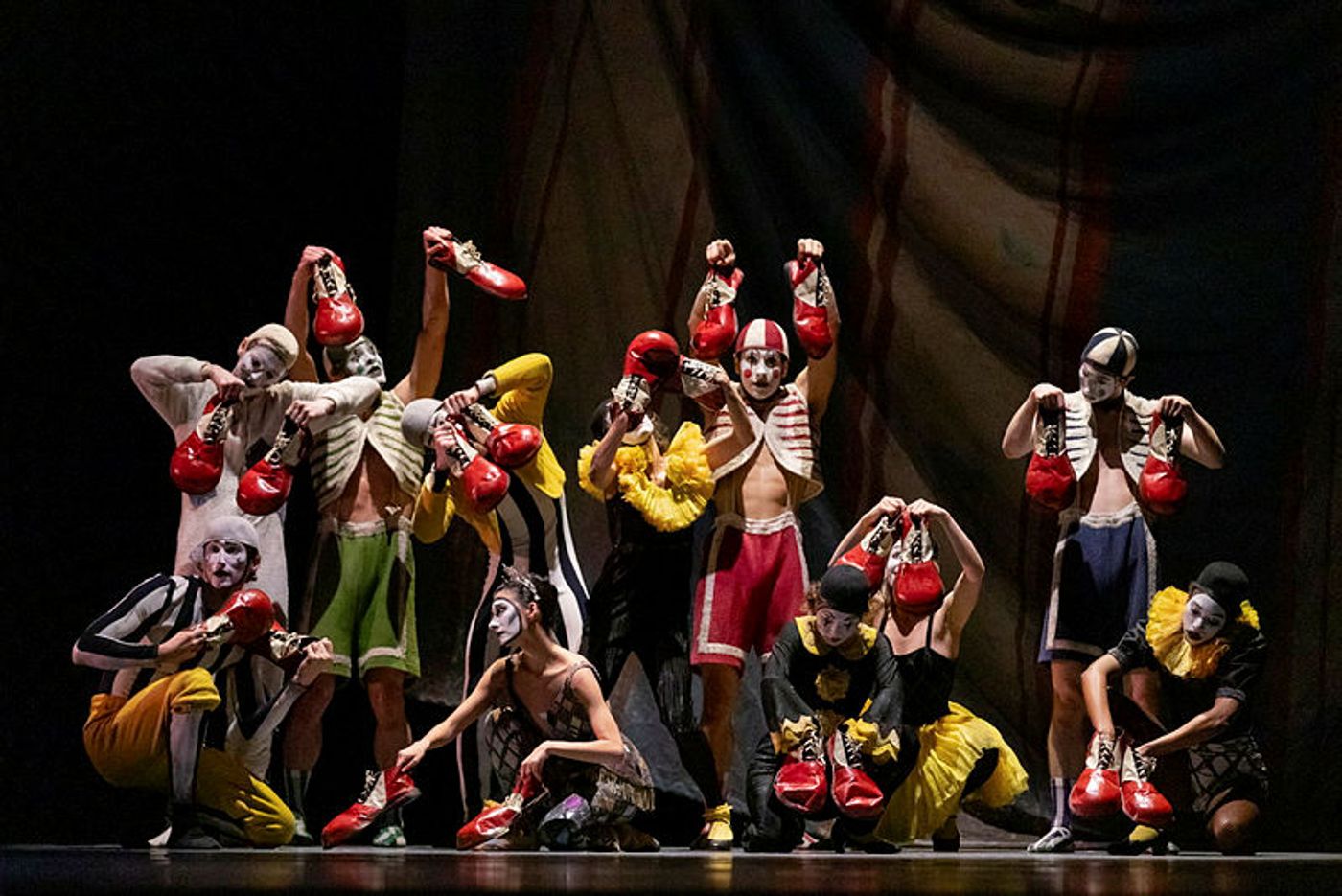
The ballet appears to take place in a shadowy, alternate-reality circus that could be a dream or a nightmare. Maybe it’s because I’ve never, not even as a child, had a fondness for circuses that its particular imagery just didn’t resonate with me and ultimately left me more bemused than transported. I was also not a fan of the irritating singsong narration for The Oracle, so reminiscent of bad 1980s performance art, though I admit it is fascinating to hear a ballerina speak from the stage for once.
But enough carping and on to the good news. Happily, mixed in with all that self-conscious weirdness MADCAP does contain three particularly captivating sequences, all for the men. There is a whizbang trio set to Pär Hagström’s, oompah, Mitteleuropean music for a spectacular Simone Pompignoli, Jacob Selzer and Alexis Francis Valdes (each fabulous, each distinctive) that surprised and delighted at every turn. This was followed by a duet for a pair of lankier guys who suspended a large red nose between their faces for the length of the number. Rowe’s choreography here is breathtakingly intimate and strange, even if it calls for a bit of technical wizardry that Benjamin Davidoff and Nathaniel Remez (both otherwise terrific dancers) struggled with.
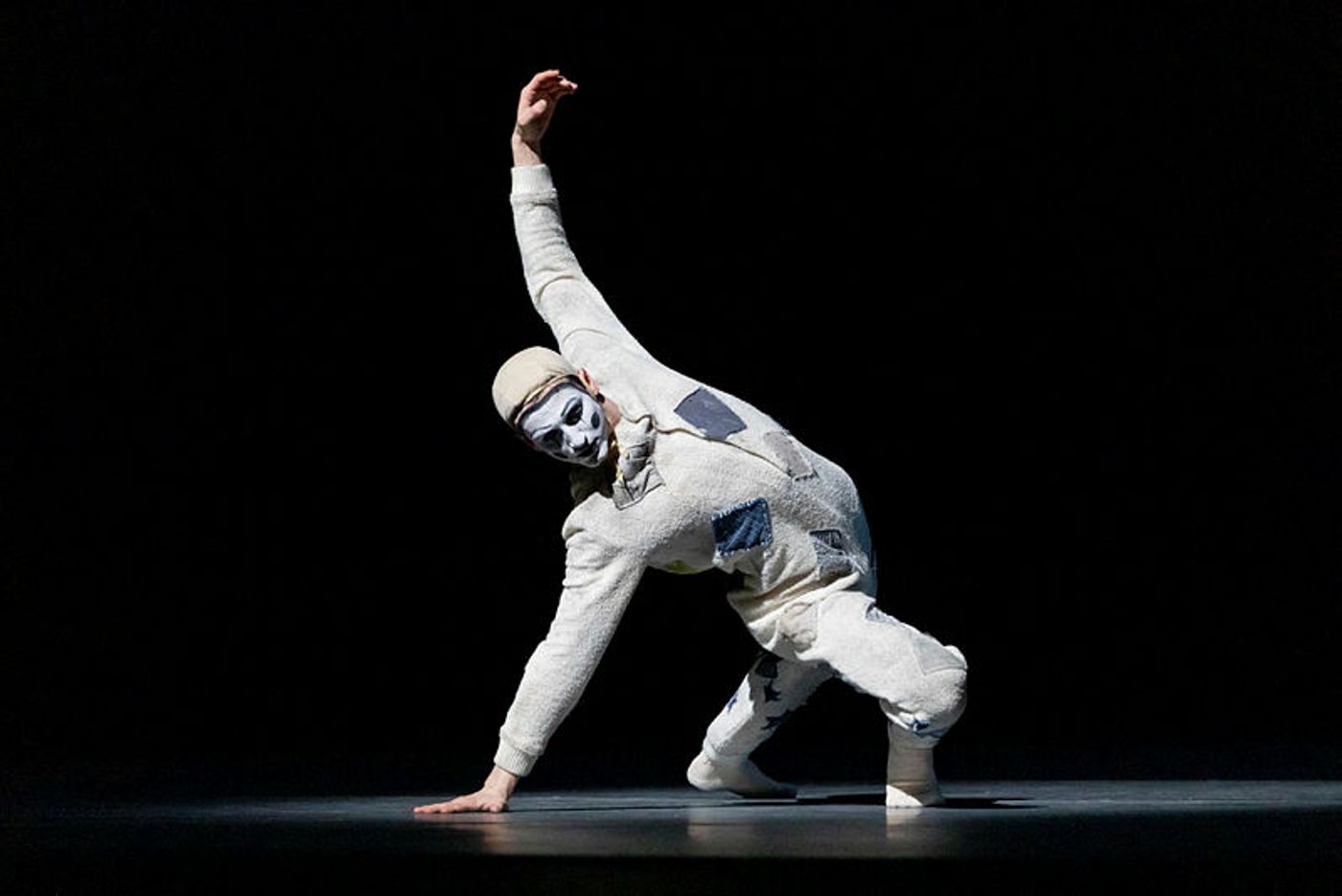
And then there was the rubber-limbed solo for The Kid, performed as it was at the premiere by an entrancing Parker Garrison. This young dancer has really filled in the contours of enigmatic character and found new depths and shadings in the choreography. Myles Thatcher in the central role of The Clown gave it his all without overdoing the angst or the sad-clown business. It was a pleasure to see this longtime SFB soloist dance a leading role for a change.
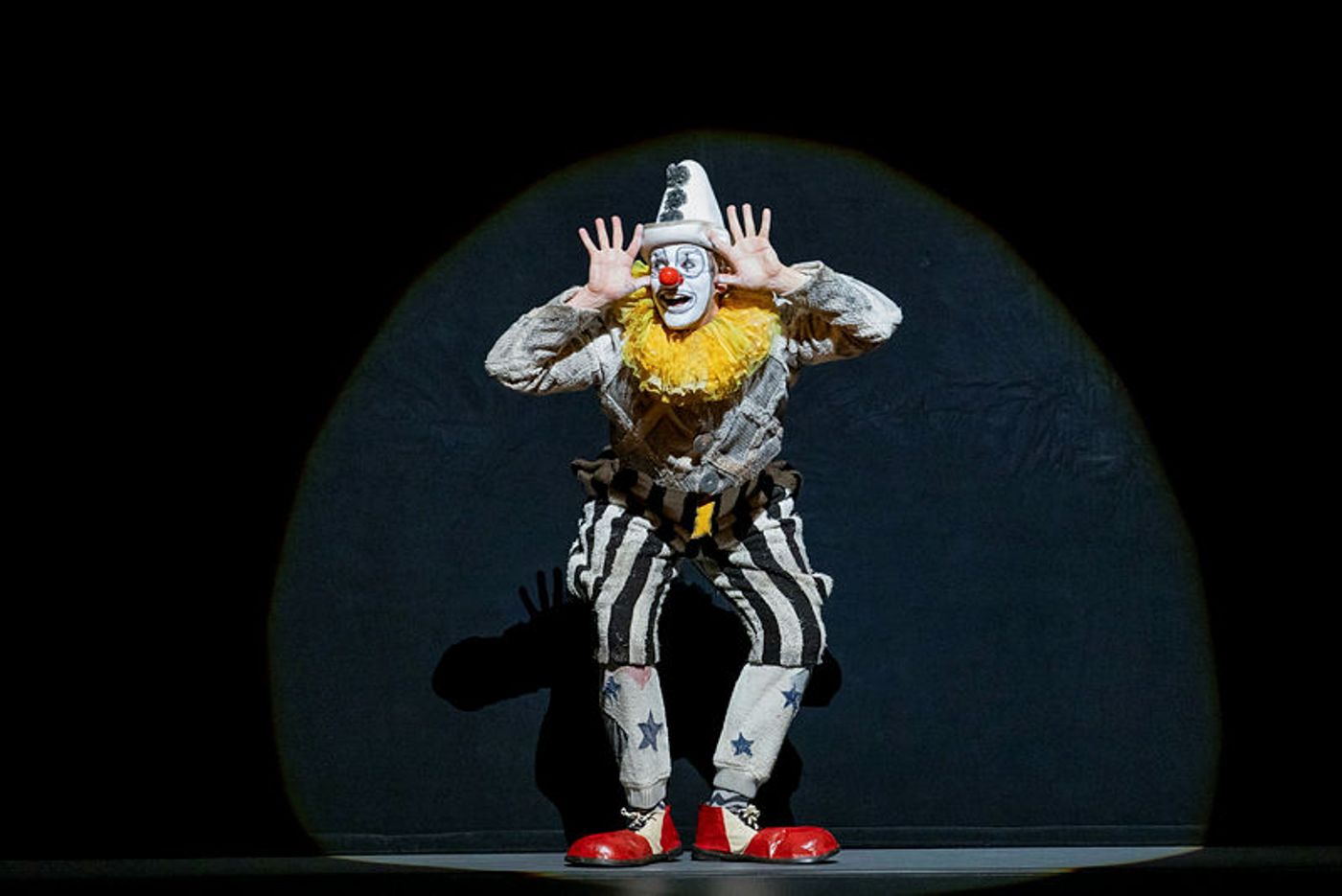
All in all, next@90 Curtain Call is a rewarding evening with many high points that offers a welcome glimpse into contemporary ballet’s possibilities as well as some of its limitations. Especially if swans, fairies and/or princes aren’t really your thing, this might be just the program for you.
(all photos by Reneff-Olson Productions)
---
Performances of San Francisco Ballet’s next@90 Curtain Call continue through Saturday, April 13th at the War Memorial Opera House, 301 Van Ness Avenue, San Francisco, CA. Running time is approximately two hours ten minutes, including two intermissions. For tickets and additional information, visit www.sfballet.org or call (415) 865-2000, M-F 10am-4pm.
Reader Reviews

Videos

